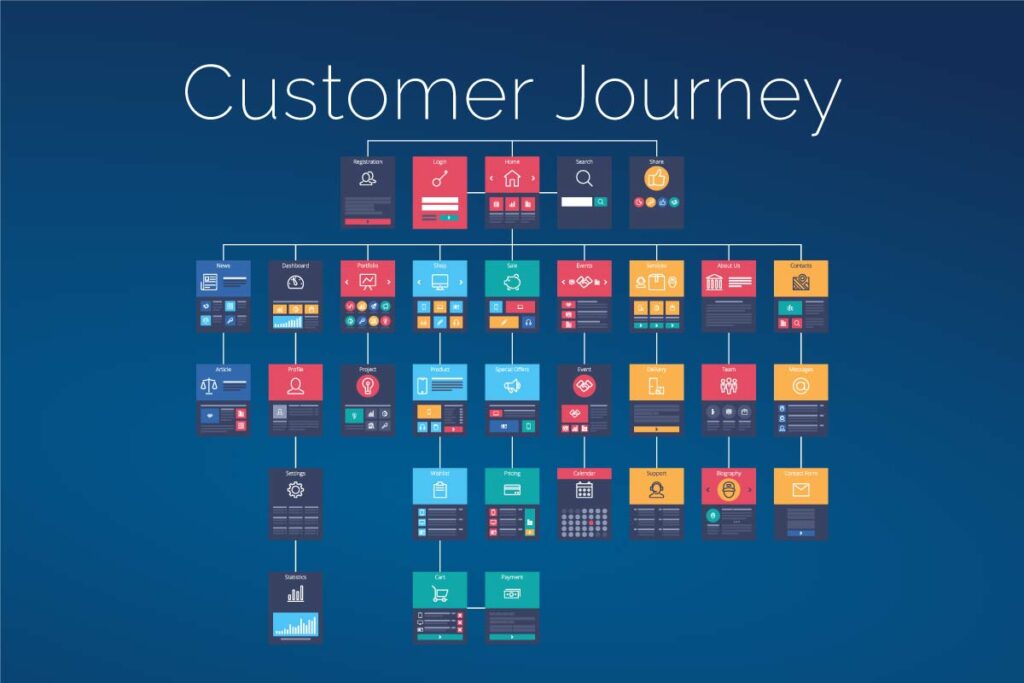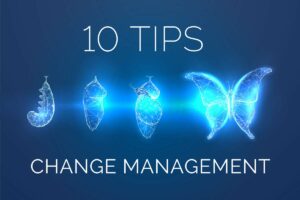A company’s website is its business card in the digital world. That’s why a successful website needs a well thought-out site architecture, a design that conforms to the brand, and meaningful content that can be quickly grasped. This is the only way to provide customers or users with a complete brand experience, offer a well-managed customer journey, and at the same time achieve the set business goals.
As we have already pointed out in our previous blog posts, companies today are strongly challenged in the real as well as digital world to appear “experienceable” in order to be perceived holistically. Therefore, it has become imperative to provide the customer with a complete brand experience and clearly present its positioning.
The brand experience happens with the website primarily through the visual. Only then do language, texts and stories have an impact. Fast comprehensibility of the company (brand benefits) and its values (brand attributes) are essential in the digital world.
Furthermore, in order to implement an effective customer journey on the website that achieves exactly what has been set as the company’s goal, the right navigation structure is needed. A structure that guides target groups through the website and takes them exactly where you want them to go: e.g. to make a purchase, contact you, participate. In other words, a well-structured website that sells and generates qualified leads in lead acquisition.
The main elements of the website
We highlight the most important elements of a website in detail:
The navigation structure
The navigation structure is the heart of the website and essential for the customer journey of users visiting the website. Without a good guidance of the users to the added values and contents, a brand experience and the perception of the company services is also not possible.
A properly structured website shows customer value and is essential for lead acquisition. In addition, Google ranks well-structured websites better.
Requirements navigation structure:
Usability is important: users should be able to find what they are looking for or what they want to find out about quickly and easily without having to sift through the entire content of the website, and they should be provided with sufficient interaction options (call-to-actions) on the website for this purpose.
A website can have a complex structure, but in any case it should not be complicated for the user. For example, if you have different target groups, they should also be directed to exactly those pages or sections on the website that are relevant to them.
A good navigation structure also includes intuitive redirection to further relevant subpages to go into more detail if desired. The easier it is for users to find their way around the website, the more likely they are to find the information they are looking for and the longer they stay. This also has a positive effect on the rating of the website in Google through higher rankings in search queries.
The goal of a well-structured website is the corresponding customer journey, which should ultimately enable the user to take an action that corresponds to the set business goals.
The design
The experience of a brand and thus of the company increases with the consistency in the design and appearance of the website. The recognition value is increased and the brand is anchored more strongly and sustainably in the perception as a brand experience.
Content first! Design second!
Requirements Design:
In a website design, not only clear, concise and appealing design is important, but its structure must also meet the requirements of the content. In other words, the design must be such that sufficient space is created for the defined content and it allows for future leeway, editing options and extensions.
Moreover, reading behavior is mostly F-shaped: the most important information and most relevant keywords tend to belong on the left at the beginning of headlines, intros and paragraphs in the design template of each page.
Not to forget the responsive design of a website where the brand experience is easy and user-friendly on all devices.
The content strategy
The content strategy conveys the (emotional) added value of the company via the website, which subsequently also influences the establishment of contact, trust in the company’s services and ultimately the purchase decision.
Content that is adapted to the target groups, offers added value and also serves search engines.
Requirements Content:
Content should therefore be presented in such a way that it is adapted to the target groups, is subordinate to the corporate goals and actually offers customers added value.
A clear, transparent and quickly comprehensible presentation of the different services or products of your company enables the comprehensibility of your brand benefit and value proposition.
Texts must also be designed to serve users and search engines at the same time. Websites with valuable content have a clear advantage in this day and age, as Google is placing more value on content that is truly relevant, truly interesting, and that users consider valuable.
Rich content also includes keywords that are meaningfully incorporated into the texts and correspond to search terms that your target groups are looking for.
The important requirements for the website at a glance
- Usability: easy and user-friendly navigation on the website including sufficient interaction possibilities (call-to-actions) for the user
- User experience: a clear, concise and appealing design (imagery predominates)
- Accessibility: accessibility through comprehensibility and easy readability (font, size, color)
- Responsive design: Usability also on tablets and smartphones
- Content strategy: Target group-adapted address and content (brand benefits)
If you need assistance in creating or optimizing your website for a targeted customer journey, we will be happy to advise you.
Until the next update – your Growth Ninjas,
Adrienne, David, Hermann, Johannes, Katharina B., Stefan K. & Stefan G.
This might also interest you:
With the right brand positioning to more success in sales
Brand identity – the foundations of good brand communication




